Five of my Cornell Tech peers and I were fortunate enough to attend the DigitaLatest conference organized by Michelle Greenwald. The distinguished speakers represented many thought leaders from the industry. In fact, the following tech titans were represented: Pinterest, Giphy, Spotify, Twitter, IBM, Google, Facebook, Snapchat and LinkedIn.
Throughout the conference we learned from each company about what makes them unique, how to leverage those differentiators to market more successfully, and about big picture trends. I’m going to focus this blog post on the final category: my takeaways on the big picture trends as perceived by multiple tech titans.
Shrinking Content
Constantly connected devices have caused our attention spans to decrease and the frequency with which we multitask to increase. This has manifested itself in marketing with a shift in content away from 30-60 seconds and towards 3-6 seconds. Giphy is making this easier than ever with its seamless integration into a myriad of platforms that enables people to send high quality gifs that occasionally include excellent product placements. Snapchat and Instagram have moved away from static images and towards quick videos that interleave content from your network with content from advertisers. YouTube has introduced “bumper” ads, which are a maximum of 6 seconds long, and has seen increasing usage and conversion rate from this type relative to their longer form content.
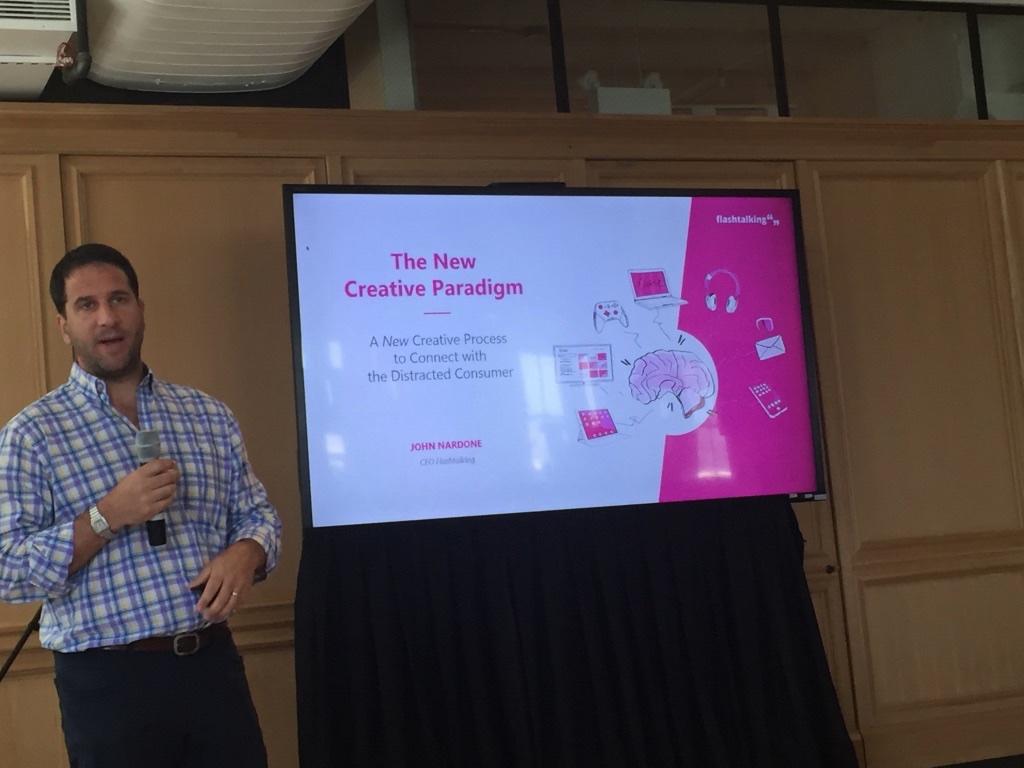 Ben Kartzman, COO of Flashtalking, explaining the creative process required to connect with distracted consumers.
Ben Kartzman, COO of Flashtalking, explaining the creative process required to connect with distracted consumers.
Communication Paradigm Shift
Throughout history humans have communicated primarily through speech transcribed into text. However, continually improving connectivity is increasing the prevalence of the common adage “a picture is worth a thousand words.” Over time, our digital communication methods have shifted from: text -> emoji -> image -> video. Outside of the obvious examples of sharing videos and images on social media, a number of companies are making enormous strides in this space to make communicating your intent easier. Pinterest Visual Search and Google Lens are initiatives that enable customers to search for more information about objects in their surroundings by simply pointing their smartphone camera! Wayfair is moving away from describing furniture with dimensions towards a world where you can use AR to simply place the items in your living room. Fashion companies are allowing people to “try on” items digitally using AR.
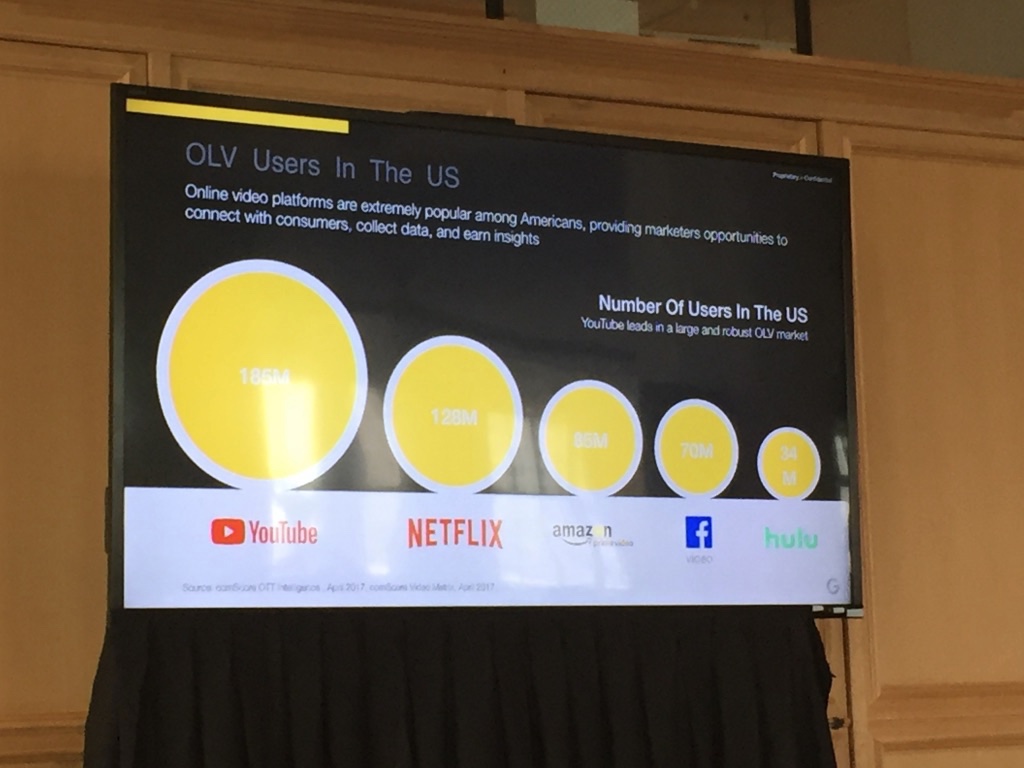 Kevin Hartman, Head of Analytics, Consumer, Government & Entertainment sectors at Google & YouTube talks about the growth of online video platforms.
Kevin Hartman, Head of Analytics, Consumer, Government & Entertainment sectors at Google & YouTube talks about the growth of online video platforms.
Personalized
Static advertisements on billboards, magazines, and newspapers had to appeal to everyone and as a result usually appealed to no one. In today’s digital world we can combine the massive amounts of data about each individual consumer with AI to ensure the advertisements they see are relevant to their interests. In fact, an excellent example of this is Corona’s “Every time _____ happens, a Corona gets its lime.” There are tens of thousands of variations of this exact same copy where the blank is filled in with a specific consumer’s proven interests. While this isn’t a 1:1 recommendation, the ad is still incredibly targeted at small niches. One challenge that arises with this level of personalization is the uncanny valley. Marketers are still figuring out how to balance familiarity with newness to ensure people are excited but comfortable rather than creeped out.
Big Data Creation
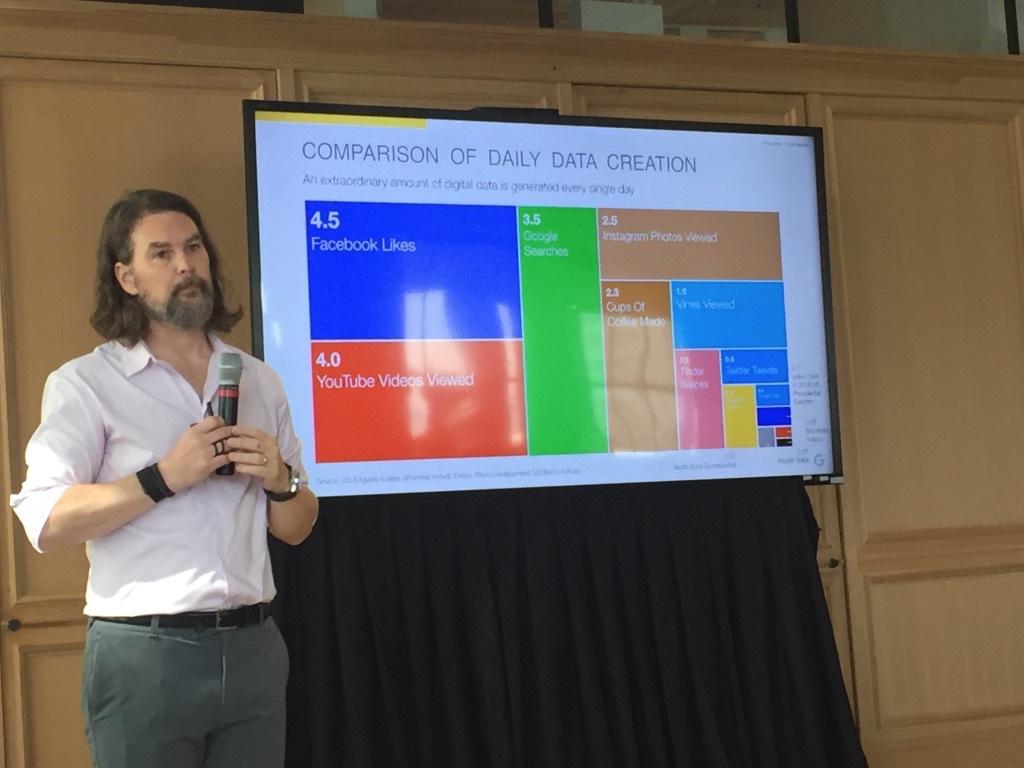 Kevin Hartman, Head of Analytics, Consumer, Government & Entertainment sectors at Google & YouTube showing us the vast amounts of data being generated by top internet platforms.
Kevin Hartman, Head of Analytics, Consumer, Government & Entertainment sectors at Google & YouTube showing us the vast amounts of data being generated by top internet platforms.
+ AI
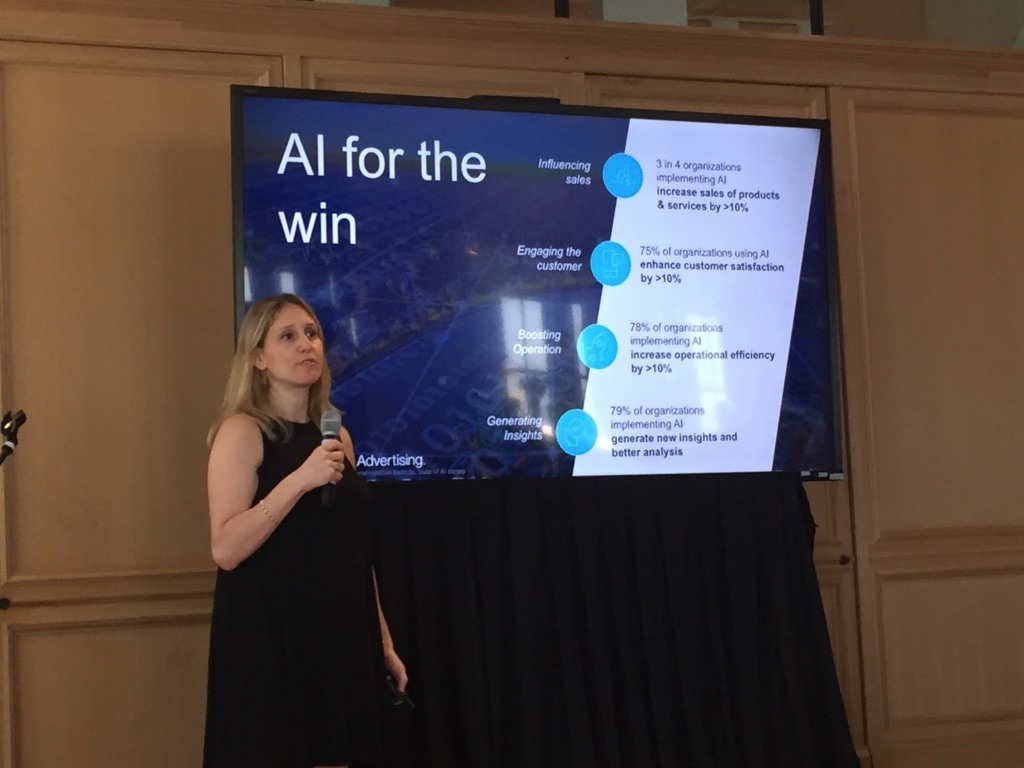 Janna Ritzcovan Synovec, Head of Brand Marketing and Sales Enablement for IBM Watson Advertising describing about how AI can increase marketing effectiveness.
Janna Ritzcovan Synovec, Head of Brand Marketing and Sales Enablement for IBM Watson Advertising describing about how AI can increase marketing effectiveness.
= Personalization
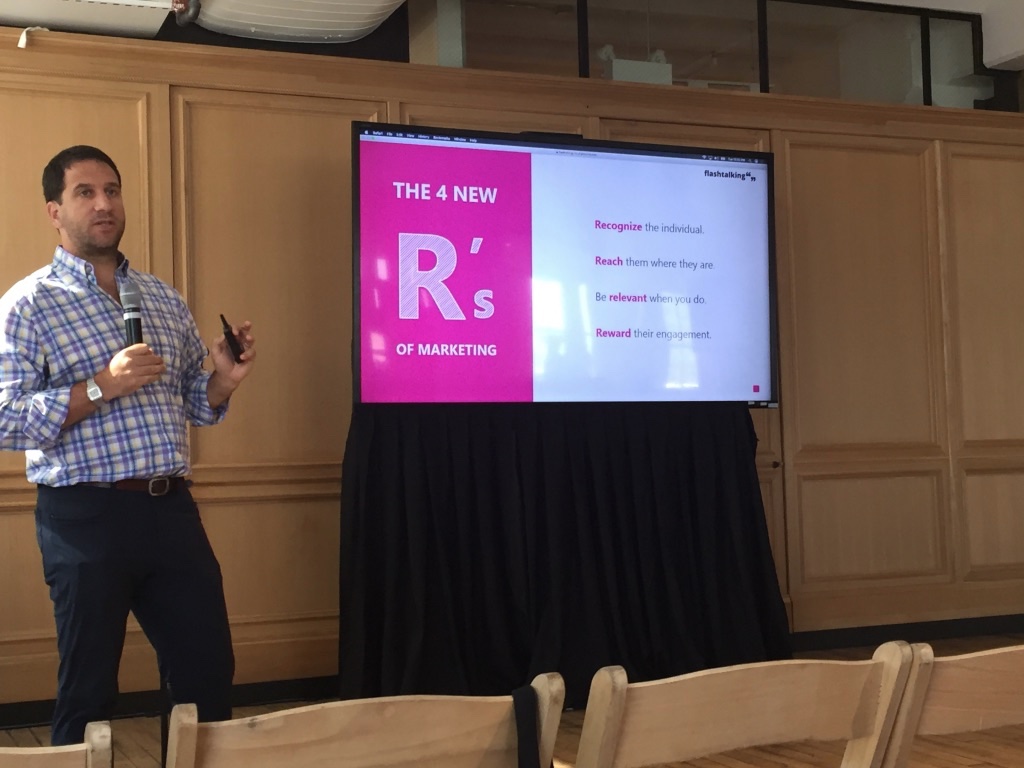 Ben Kartzman, COO of Flashtalking, introducing the four new R’s of marketing: recognize, reach, relevant, reward.
Ben Kartzman, COO of Flashtalking, introducing the four new R’s of marketing: recognize, reach, relevant, reward.
Psychographic Alongside Demographic
Historically marketers built target segments and personas around demographics. In an attempt to increase emotional engagement, marketers have started appealing to hobbies and interests regardless of demographic. An excellent example of this is when Subaru created a TV advertisement that showed dogs dropping their puppy off at the first day of school.
Rather than targeting a specific age, gender, or income bracket – Subaru targeted all dog lovers. This type of advertisement truly connects with the wants and needs of the individual. By using machine learning to predict what people will do or like based on what they’ve done or liked, we can use psychographic marketing to find audiences with which our advertisements will resonate.
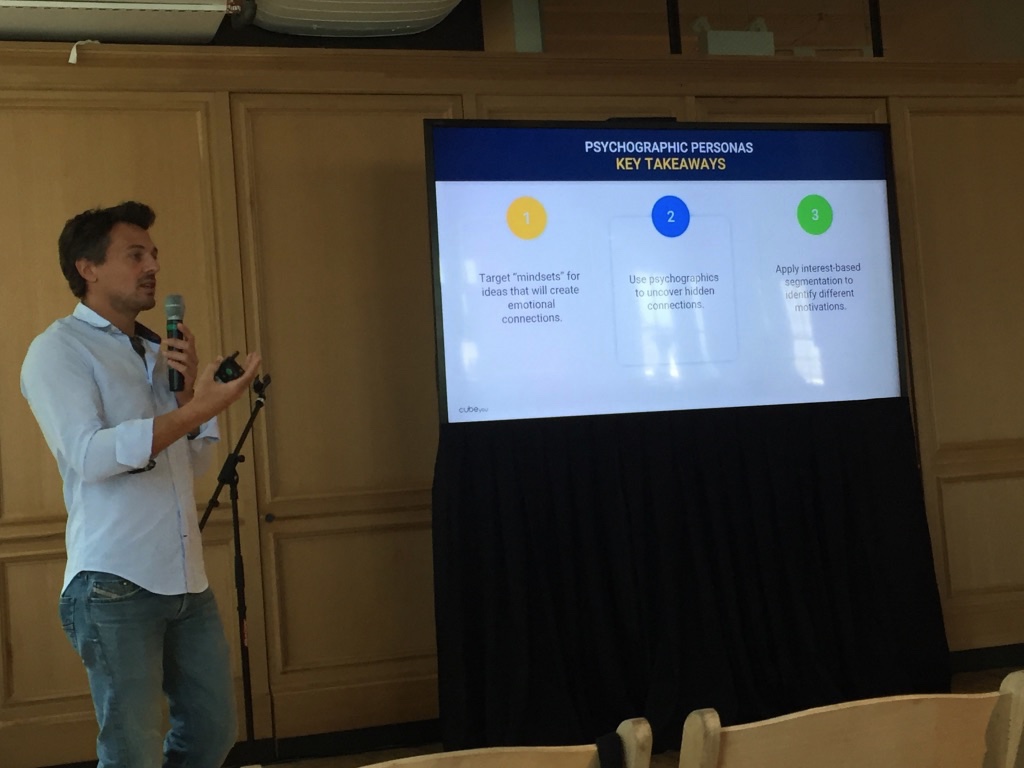 Federico Treu, Founder & CEO of CubeYou, discussing the key takeaways of his presentation about the effectiveness of psychographic personas in various ad campaigns.
Federico Treu, Founder & CEO of CubeYou, discussing the key takeaways of his presentation about the effectiveness of psychographic personas in various ad campaigns.
Context is King
Just because services like Mailchimp allow us to easily implement always on marketing doesn’t mean we can continuously spam customers. With the increasing variety of optionality in how to deliver and craft our creative content, it is important we take the context of the consumer into account when choosing what sort of content to deliver them. Did they just make a major life decision? Are they in a rush? What’s the weather in their area? All of these contextual factors should play into our marketing strategy. A great example of this is when IBM Watson teamed up with Hulu to build interactive marketing campaigns to help people find new television shows to watch by prompting them to engage at increasingly deeper levels depending on their time constraints.
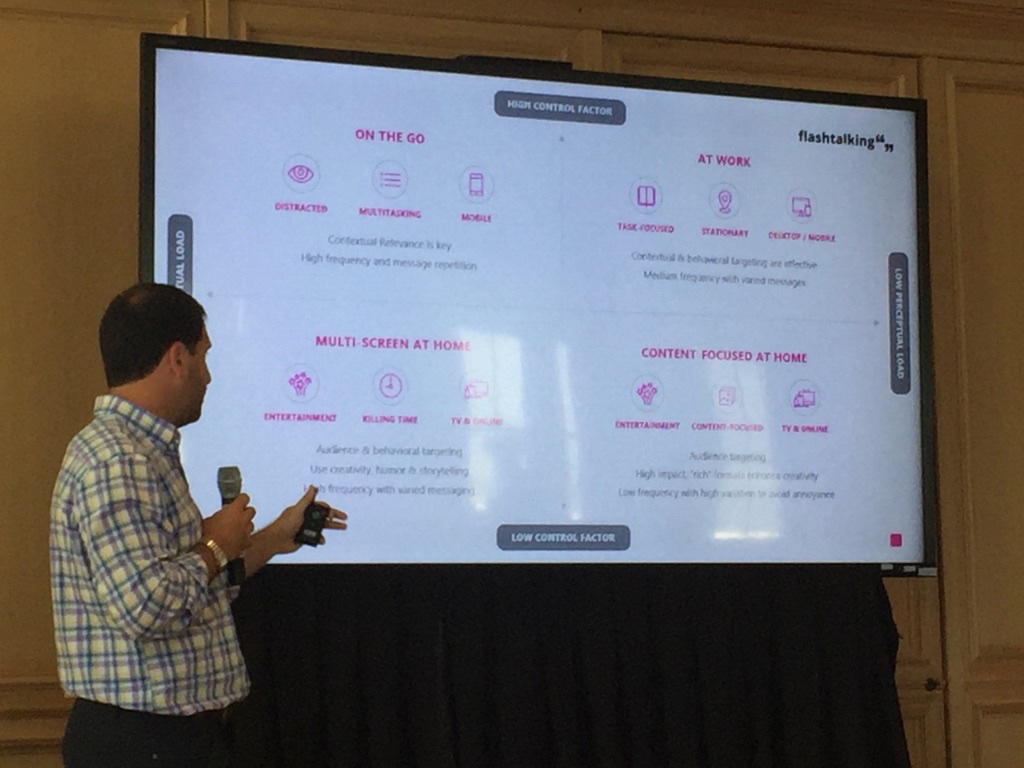 Ben Kartzman, COO of Flashtalking, presenting a control factor vs. perception load 2x2 to help tailor your creative for the context it is being consumed in.
Ben Kartzman, COO of Flashtalking, presenting a control factor vs. perception load 2x2 to help tailor your creative for the context it is being consumed in.
My classmates and I are incredibly grateful to Michelle Greenwald for the opportunity to attend DigitaLatest: An essential summit for marketing executives. We learned a tremendous amount about what makes each online platform unique, how to leverage those differentiators to market more successfully, and about big picture trends in the industry. We’ll make sure to capitalize on this knowledge as we build and bring new products to market during and after our MBA experience at Cornell Tech.